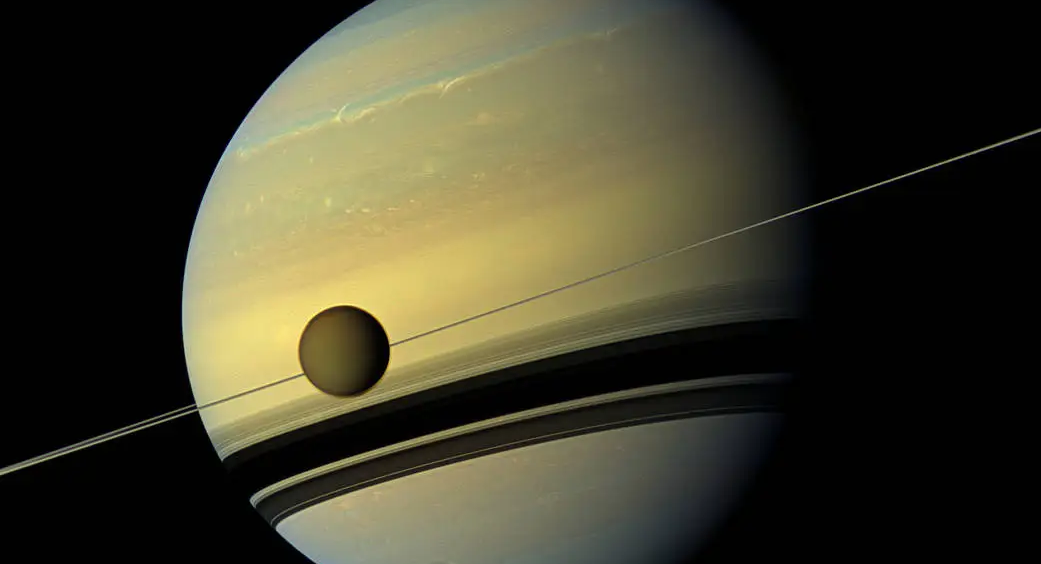September stargazing begins with Saturn rising in the east on the first day of the month with its largest moon, Titan, shining brightly on the ringed planet’s southern edge.
On Sept. 8, the sixth planet from the sun will be in opposition, meaning it will be as close it gets to Earth. Saturn will be fully illuminated by the sun and will appear brighter and larger than at any other time of the year.
Jupiter, Venus and Mars will also be visible to the naked eye this month.
Deep-sky objects — astronomy lingo for objects outside our solar system — will pop into view as the summer winds down toward the fall equinox on Sept. 22, marking shorter days to come. From a dark site, the Milky Way and Andromeda galaxies are visible without the aid of telescopes or binoculars. Constellations like the Pleiades, Taurus and Orion should be easy to find. Those clusters can also aid with locating deep-sky objects, such as the Andromeda galaxy.
“The Labor Day weekend is really a great time for anybody to go out either just stargazing, naked eye or with binoculars or a telescope, for deep sky viewing,” Bart Fried from the Amateur Astronomers Association said.
Allowing your eyes to adjust to the darkness is key to deep sky viewing, and can involve staring into the evening sky for up to a half-hour without interruptions. Fried recommends finding a comfortable spot, putting down a blanket, getting comfy and enjoying the show. Getting to the darkest skies possible enhances the experience by making the heavenly bodies appear more luminous. The best viewing spots have a clear line of sight, unobstructed by trees or buildings and away from artificial lights. Some favorite spots among amateur astronomers include Fresh Kills on Staten Island and Floyd Bennett Field in Brooklyn.
The Milky Way is easily recognizable across the sky. Its largest galactic neighbor, the Andromeda galaxy, is the furthest object that humans can see in space without the aid of a telescope or binoculars — about 2.5 million light years away from our galaxy,
“The Andromeda galaxy looks like an oval thumbprint, just a fuzzball. No color. like a blurry thumbprint,” Fried said. “With a large telescope, you can see that it has spiral arms and a very bright nucleus.”
Fried added that Andromeda has “some ginormous, incomprehensible number of stars.” (Astronomers commonly estimate 1 trillion stars.) The Andromeda system is moving toward the Milky Way galaxy at a rate of nearly 70 miles per second, with a collision expected in about 5 billion years.
To find Andromeda, begin by locating the Little Dipper. The star at the end of the Little Dipper’s handle is Polaris, the North Star. Next to the North Star is the W-shaped constellation of Cassiopeia. The two triangles of the W will point towards Andromeda.
Once a stargazer has located Cassiopeia, many of September’s constellations should be easy to find – like the house-shaped Cepheus, Cetus the whale and Perseus. Smartphone apps can also help – Jackie Faherty, an astrophysicist at the American Museum of Natural History, recommends Star Walk.
“Get yourself towards the water or on a rooftop where you can see more of the sky and look up and look towards the zeniths, towards the highest part of the sky, and then search around and look,” Faherty said.
The moon will experience its final eclipse of the year on the evening of Sept. 17 beginning at 8:41 p.m. and ending at 12:47 a.m. the next day. Lunar eclipses happen when the moon moves into the Earth’s large shadow. This eclipse will be a partial one with a little less than 5% of the moon obscured in shadow, but it will be noticeable.
“The moon will just start to get dimmer and it’ll go from the bright, and it goes into the penumbra, and it just starts to look like there’s a cloud obscuring it a bit. So it just gets a bit dimmer,” Faherty said.
September will end with the Orionids meteor shower, which lasts for two months. The show starts on Sept. 26, but won’t peak until the next month, when there will be an expected 20 shooting stars per hour traveling at a speed of 41 miles per second. It’s one of two cosmic showers created by the debris left behind by the 7-mile wide Halley’s Comet on its nearly 76-year orbit around the sun. The comet is expected to make its next appearance in 2061.
